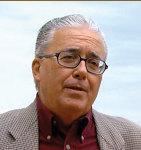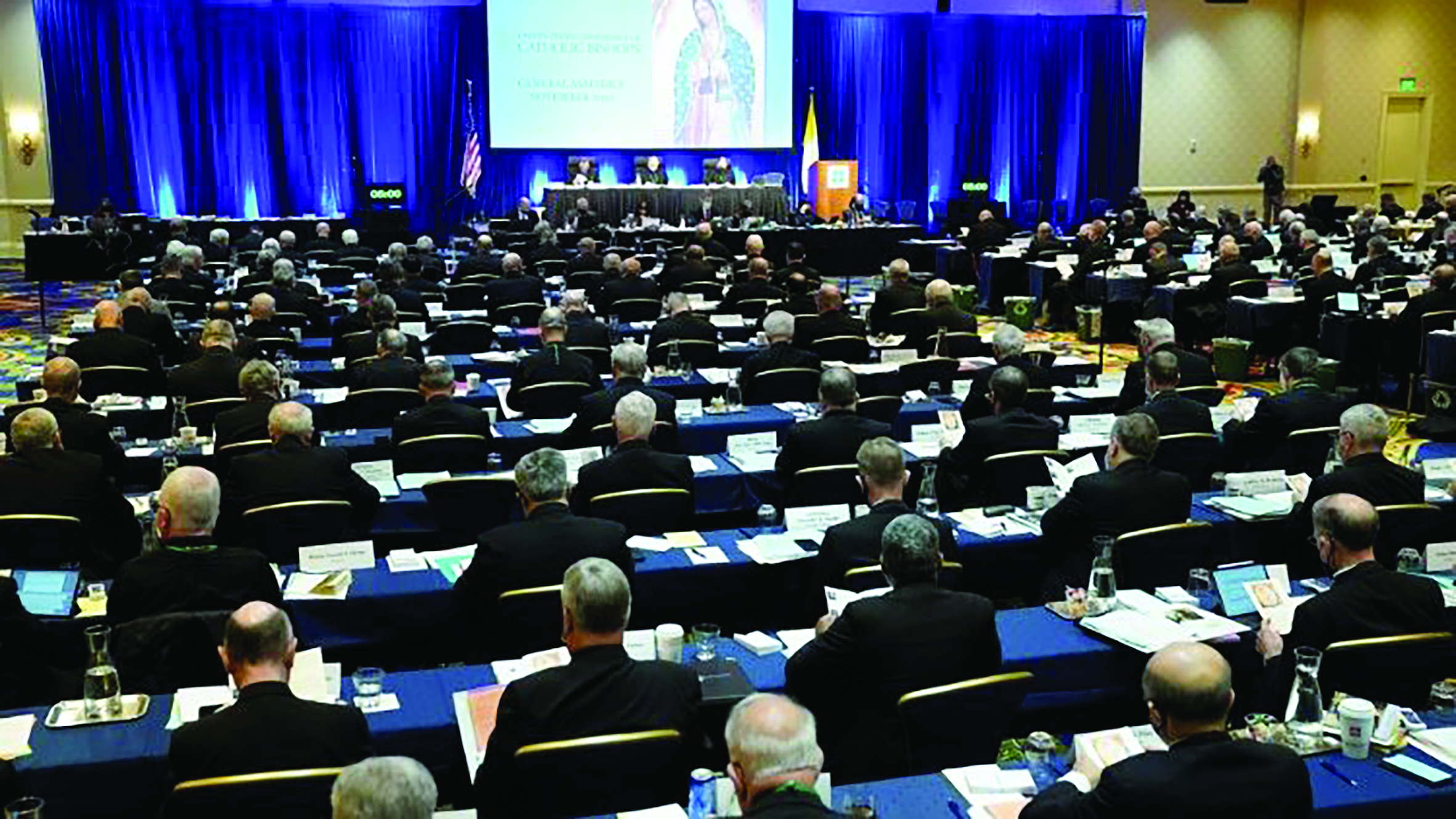
Guzman Carriquiry Lecour.
Violence has become epidemic in many parts of Latin America. What can be done to stem the bitter tide?
The horror and indignation provoked by the disappearance last fall of 43 young students in Mexico — brutally assassinated, according to the declarations of three members of a group of drug traffickers — brings to the fore once again the grave issues of violence and instability in Latin America.
Not only in Mexico, but in all of Latin America, crime — and violent crime in particular — is increasing yearly. A surge in the extent and intensity of this kind of violence is being observed, contributing to a common, habitual, daily sense of insecurity and putting in danger the “tranquility of order” which St. Thomas Aquinas states is an element of primary importance in civil society.
This unprecedented violence is compounded by the actions of criminal organizations engaged in the drug trade, not only in Mexico but throughout the continent, in particular the war between the many “cartels” and criminal groups struggling for control of drug distribution networks. Latin America, which produces 90% of all cocaine, dwells in the shadow of the United States, the main world consumer, while consumption is increasingly being globalized. The infection has reached Central America, the Andes, the Pacific coast, Brazil, Argentina, the Antilles. It has now contaminated the entire region. Emigrants from Central America, in their peregrination towards the border of the United States, are subjected to a hell of violence and abuse, while the violent gang subcultures of the isthmus are also involved in drug consumption and distribution. The tradition of violence in Colombia, fed by the “mix” of guerrilla warfare and drug trafficking, as well as by the actions of paramilitary groups, has spilled over and places the issue of making peace at the head of national and regional priorities. And finally, what can be said of the images of violence — even of war — in some of the favelas of Rio de Janeiro, where ultra-modern machine guns, bazookas, tanks, and helicopters are part and parcel of the daily scene, while the entire city abounds with armed assaults and robberies? Latin America also holds the infamous record for kidnappings — 75% of all world kidnappings(!) — which spurs the proliferation of fortress-like residences, with personal security forces and heightened alarm and security systems.

People taking part in a protest to demand more information about the 43 missing students.
Several competent institutions have calculated that in little more than 20 years, violence—measured through the change in levels of premeditated homicide—has increased by 115%. A 200% increase has been seen in Colombia, Paraguay, and Venezuela; more than 100% in Argentina, Ecuador, Perú, Uruguay, Mexico and Brazil. Only in Chile has a reduction in this average been seen.
For these reasons, the fight against violence has become one of the central priorities on the political agendas of these countries and the region as a whole, as well as on those of its regional institutions. Despite the unreliability of some information in this area, there is no doubt that Latin America is the most violent region in the world, with the exception of sub-Saharan Africa (with the full weight of their civil wars). While the homicide rate in the region has reached an average of 27.5 homicides per 100,000 inhabitants, the world average is only 10.7 homicides per 100,000 inhabitants, and in southern Europe is below 3 homicides per 100,000 inhabitants. In the past 20 years that rate has increased by over 50% among us [the countries of Latin America]. And if the Latin American average is 27.5 homicides per 100,000 inhabitants, it must be noted that in Colombia it is 84.6 homicides, in El Salvador 43, in Brazil 31 (per 100,000 inhabitants). Brazil has a firearms mortality rate 66 times greater than that of France.
This violence is especially concentrated in the Latin American megalopolises, but it also extends to medium-sized cities. Mexico City, Tijuana, Ciudad Juarez, Cali, Bogota and Medellin, Recife, Rio de Janeiro and Sao Paolo are theaters of frequent violence and heightened instability. Forty of the fifty most violent and dangerous cities in the world, including the top sixteen, are Latin American.
The major threat is the increasingly widening gap between the super-rich and the poor. In Latin America, which since 2002 has seen GDP growth of 4.2%, and in which nearly 70 million have risen out of poverty and 50 million have joined the middle class, the issue of economic justice has still, nevertheless, not yet been given its due. This is not to say that poverty, in and of itself, generates violence. Rather, crime arises out of these very strident inequalities, which feed feelings of deprivation, frustration, anger and despair. The words of Pope Francis in the Apostolic Exhortation Evangelii Gaudium on this equation between violence and inequality are very clear.
There is also an institutional crisis. Problems are especially concentrated in the judicial, police, and penal systems, which often oscillate between corruption and impotence. In Mexico, in 2013, only 9.9% of crimes were reported; in Colombia only 25% of crimes are reported. The police forces do not function adequately and do little investigation, and impunity is high. In many countries less than 10% of homicides are resolved, which provides incentive for the hiring of hitmen, and feeds the temptation to take justice into one’s own hands.

A man walks on his knees in honor of Our Lady of Guadalupe in Mexico City on December 10.
It is said that half of Mexican prisons are “self-ruled.” Violent rebellions of the prisoners and bloody suppressions are the order of the day everywhere. The words “prevention” and “rehabilitation” seem much of the time to have been struck from the vocabulary. In this vein, much can be learned from the recent speech of Pope Francis before a group of students of criminal law.
The increases in violence and drug trafficking go hand-in-hand, so much so that public policies proposing the controlled legalization of “light” [recreational] drugs are beginning to be debated in the region. In Uruguay, legislators have taken the first step in this experiment. This runs the risk of capitulating in the face of drug use and operating in the rather ambiguous distinction between “light” and “heavy” drugs.
It is essential to do everything possible to gradually uproot the culture of violence that pervades society. This culture counts, above all, the youth as its protagonists and as its victims. There are almost 40 million young people, between 15 and 29 years old, in Latin America who neither study nor work, who are particularly vulnerable to and attracted by group violence or organized crime networks. It has been written that “death is not democratic; it strikes at the humble, the young, the most isolated. People without voices who matter little…”
“Disposable material,” as Pope Francis has lamented.
The culture of violence is transmitted and learned, in large measure, through observing fathers or older brothers. And this culture of violence grows and is transmitted more in unstable family environments, without a stable marital relationship, without shared parental responsibility for children, without job stability, with inadequate levels of schooling for individual members, who live in conditions of misery and promiscuity. Moreover, the tendency toward a liberalization and banalization of the practice of abortion or of euthanasia does no more than habituate violent behaviors toward the weakest, most vulnerable and most defenseless, through a lack of respect for life.
In facing these problems it is also fitting to speak, as Pope Benedict XVI has done, of the “educational emergency.” The work that is carried out in marital and family life is as fundamentally educative as that which takes place in scholastic institutions. This educational task, of forming a person, growing self-awareness of one’s own dignity and the dignity of others, internalizing attitudes of respect for others, and maturation of an authentic freedom and responsibility, requires much patience and perseverance. It is an arduous and difficult task, but indispensable. It can only be undertaken through and animated by a great deal of charity and love for the life and destiny of the many who, without it, will live in a state of malaise and confusion. It does not bring with it immediate results, but, long-term, is the most effective road to combat violence.
The Catholic Church is assuredly a fundamental educational ministry in this sense, as are other Christian communities and numerous non-governmental organizations and civic initiatives. The simple act of being a force for cohesion in a society that is, more and more, breaking apart and breaking down, is an important contribution in and of itself. The mystery of communion, which is the Church, and which embraces all people, tends to infuse and permeate the social fabric.
The Christian tradition, which makes us recognize one another as brothers and sisters, children of the same Father, is deeply rooted in the culture of our people. Through its many pursuits, the Church communicates the Gospel, which is a commandment to love, the good news of the dignity of man, gratitude for the gift of life. All of this is a powerful antidote to violence.
Yet there arises the serious issue of the contradiction between the Christian faith professed by the vast majority of Latin Americans and the high level of violence found in their communities. Often one observes even the most infamous criminals participating in religious events or ostentatiously appropriating religious symbols.
This is not — generally, at least — so much hypocrisy as a sign of the divorce between faith and life, often accompanied by religious ignorance and a confused, perhaps guilty, conscience.
Between the demon of violence within a culture of death and the confused desire for a more “human” life for oneself, or at the very least for one’s children, there is a dramatic tension, even in the hearts of the most hardened delinquents. Often stories are heard of individuals who, in the midst of such contradictions, walk a path of conversion or make surprising gestures.
For God nothing is impossible; his mercy does not commute the sentences of the tribunals or the prison time, but it opens up the way toward repentance, change, taking comfort in hope.
This is a fundamental contribution and, without a doubt, the Church is called upon to loosen the grip of violence upon the hearts of men, open them to the love of God and turn them into builders of a society that is more just, more peaceful, and more human. m
Translated by Christopher Hart-Moynihan






Facebook Comments